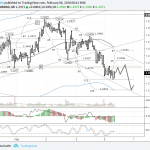On the latest edition of Market Week in Review, Mark Eibel, director, client investment strategies, and Rob Cittadini, director, Americas institutional, discussed recent market performance, the upward revision to the U.S. GDP growth rate for the second quarter and key takeaways from the U.S. Federal Reserve (the Fed)’s Jackson Hole, Wyoming, economic symposium.
Trade negotiations, tariff threats drive markets again
Markets generally fared well the week of Aug. 27, Eibel said, due to more promising news on the trade-negotiation front. The announcement at the start of the week that the U.S. and Mexico had struck a deal on a revised trade agreement sent markets higher, he noted, with additional gains on Aug. 28 and 29 as speculation mounted that a trade deal with Canada was also likely around the corner. However, major indexes slid later in the week after it was reported that U.S. President Donald Trump was likely to proceed with plans to impose tariffs on an additional $200 billion worth of Chinese goods, Eibel said.
The week’s up-and-down moves are reflective of the market’s main issue of late, he said. “Clearly, the market has made its statement on what it cares most about nowadays, and that seems to be trade and tariffs,” Eibel stated, adding that the week of Aug. 27 is a perfect example of this, in both a positive and negative way.
The U.S. economy: As good as it gets?
Turning to U.S. economic news, Eibel said that the nation’s GDP (gross domestic product) growth rate for the second quarter was revised upward on Aug. 29, from 4.1% to 4.2%. “This is a very good number,” Eibel said, “and when you factor in the strong results from second-quarter earnings season as well as low unemployment, it almost feels like it can’t get any better than this.”
In Eibel’s view, this is precisely what the U.S. market is challenged with. “The market is looking forward, as it always does, and investors are realizing that it’s going to be increasingly difficult to beat some of the key numbers from the second quarter,” he remarked. In Eibel’s mind, this sets up a battle between investors who want in on the good times, and those who see historically high valuations and rising interest rates as reasons to look beyond the U.S. “At Russell Investments, we’re in the latter camp, as we believe that there are some better opportunities outside the U.S.,” he said.









Leave A Comment